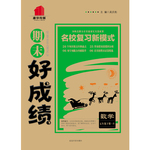题目内容
The deserted island is only _______ by boat.
| A.suitable | B.practical | C.available | D.accessible |
D
解析这题考查形容词的辨析:suitable合适的practical实用的available可获得的accessible可到达的,D选项符合句意:这个荒岛只有乘船可以到达。

 期末好成绩系列答案
期末好成绩系列答案 99加1领先期末特训卷系列答案
99加1领先期末特训卷系列答案 百强名校期末冲刺100分系列答案
百强名校期末冲刺100分系列答案 好成绩1加1期末冲刺100分系列答案
好成绩1加1期末冲刺100分系列答案 金状元绩优好卷系列答案
金状元绩优好卷系列答案Many people will remember the flight of the space shuttle (航天飞机)Challenger , in June, 1993.The achievement of Sally Ride, America’s first woman astronaut to fly into space, made this flight especially memorable.Students from two high schools in Camden, New Jersey, however, are likely to remember Norma rather than Sally whenever they think about the flight.
Norma didn’t travel alone.She brought about 100 companions along with her.Norma was an ant, a queen ant who, with her subjects, made up the first ant colony (群体) to travel into space.The ants were part of a science experiment designed by the students to test the effects of weightlessness on insects.
The equipment designed by the students for their colony functioned perfectly throughout the long space trip.The young scientists and their teachers were very sad to find that their insect astronauts had all died at some point before the container was returned to the school and opened.The problem did not occur in space, but on the ground after Challenger had landed.The container remained in the desert for nearly a week before the ant colony was removed.The hot, dry desert air dried out the colony’s container and the ants died from lack of moisture (水分).
The project was termed a success because it did provide useful information.Students will continue their efforts to find out exactly what went wrong.They will try to prevent the same difficulties from recurring (再发生) on future missions .They don’t want to be discouraged either by the death of the ants or by the $10,000 shuttle fare they will have to pay to send the next colony of ants into space.
【小题1】The story is mainly about .
| A.Sally Ride’s first ride |
| B.space equipment for insects |
| C.a space experiment with ants |
| D.going to school in New Jersey |
| A.some important things were learned |
| B.dead ants are better |
| C.everything went as expected |
| D.students wrote about it |
| A.weightlessness harmed them |
| B.space caused too much pain |
| C.no one fed them in space |
| D.they dried out in the desert |
| A.will be sent without people |
| B.should not be left in the desert too long |
| C.will have to pay double fare |
| D.will escape the trip completely |
Given Australia’s size and the fact that early settlements were far apart, Australian society is remarkably homogeneous (同种的). Its citizens are fundamentally prosperous and the way of life in the major cities and towns is much the same however many miles divide them. It takes a sharp ear to identify regional accents. However, there is some difference in lifestyle between city dwellers and the country people. Almost 90 per cent of the population lives in the fast-paced cities along the coast and has little more than a passing familiarity with the desert. The major cities preserve pockets of colonial heritage, but the overall impression is modern, with new buildings reflecting the country’s youth. In contrast, the rural communities tend to be slow-moving and conservative. For many years, Australia was said to have “ridden on the sheep’s back”, a reference to wool being the country’s main money earner. However, the wool industry is no longer dominant. Much of Australia’s relatively sound economy is now achieved from natural coal and wheat, and by being the largest diamond producer in the world. Newer industries such as tourism and wine making are also increasingly important. Australians are generally friendly and relaxed, with a self-deprecating sense of humor. On the whole, Australia is a society without hierarchies (等级制度), an attitude generally held to stem from its prisoner beginnings.
Yet, contrary to widespread belief, very few Australians have true prisoner origins. Within only one generation of the arrival of the First Fleet in 1788, Australia had become a nation of immigrants. Originally coming almost entirely from the British Isles, today one in three Australians comes from elsewhere. Australia’s liberal postwar immigration policies led to an influx of survivors from war-torn Europe, most notably Greeks, Italians, Poles and Germans.
The emphasis has shifted in recent years and today the majority of new immigrants are from Southeast Asia. Today Australia is a ‘blend of nations’ and although some racism exists, it has generally been a successful experiment and the country is justifiably proud to have one of the most harmonious multicultural communities in the world.
【小题1】What does the writer mean by saying “It takes a sharp ear to identify regional accents.” in the first paragraph?
| A.Australians speak Standard English with no local accents whatsoever. |
| B.You have to practice a lot to learn to understand the different accents. |
| C.The Australian regional accents are very difficult to understand indeed. |
| D.There is not much difference between the accents in different areas of Australia. |
| A.Most Australians have ancestors who were prisoners. |
| B.The Australian economy is dependent on sheep exports. |
| C.The majority of people living in Australia come from Europe. |
| D.The pace of life is different in the city and in the country. |
| A.Community | B.racism | C.blend of Nations | D.Southeast Asia |
| A.there are no signs of Australia’s colonial past in its modern cities |
| B.Australia’s recent immigration policy encourages immigrants from Southeast Asia |
| C.immigrants from Southeast Asia have brought racial problems |
| D.“riding on sheep’s back” resulted in slow development in rural communities |
The painter Georgia O’keeffe was born in Wisconsin in 1887 and grew up on her family’s farm. At seventeen she decided she wanted to be an artist and left the farm for schools in Chicago and New York, but she never lost her bond with the land. Like most painters, O’Keeffe painted the things that were most important to her, and nearly all her works are simplified portrayals of nature.
O’Keeffe became famous when her paintings were discovered and exhibited in New York by the photographer Levered Stieglitz, whom she married in 1924. During a visit to New York in 1929, O’Keeffe was so moved by the bleak(荒凉的) landscape and broad skies of the Western desert that she began to paint its images. Cows’ skulls and other bleached(变白的) bones found in the desert figured prominently(突出的) in her paintings. When her husband died in 1946, she moved to New Mexico permanently and used the horizon lines of the desert, colorful flowers, rocks, barren(贫瘠的) hills, and the sky as subjects for her paintings. Although O’Keeffe painted her best known works in the 1920’s, 1930’s and 1940’s, she continued to produce tributes(贡品、颂词) to the Western desert until her death in 1986.
O’Keeffe is widely considered to have been a pioneering American modernist painter. While most early modern American artists were strongly influenced by European art, O’Keeffe’s position was more independent. She established her own vision and preferred to view her painting as a private endeavor. Almost from the beginning, her work was more indentifiably American than that of her contemporaries in its simplified and idealized treatment of color, light, space, and natural forms.
【小题1】 Which of the following best tells what this passage is about ?
| A.O’Keeffe was a distinctive modern American painter. |
| B.O’Keeffe was the best painter of her generation. |
| C.O’Keeffe liked to paint only what was familiar to her. |
| D.O’Keeffe used colors and shapes that are too reduced and simple. |
| A.Her rural upbringing | B.Her life in the West |
| C.The works of European artists | D.The appearance of the natural landscape |
| A.A photoghrapher’s relationship with a model. |
| B.A writer’s relationship with a publisher. |
| C.A student’s relationship with a teacher |
| D.A carpenter’s relationship with a hammer. |
| A.Her work became influential in Europe. |
| B.She painted the American Southwest. |
| C.Her paintings had a definite American style. |
| D.She painted things that were familiar to her. |
The wreckage of something like a jet plain discovered in the heart of the desert is believed ______ a UFO and _______down for reasons still mysterious.
|
A.to be; have fallen |
B.to have been; to have fallen |
|
C.to be; to fall |
D.having been; having fallen |